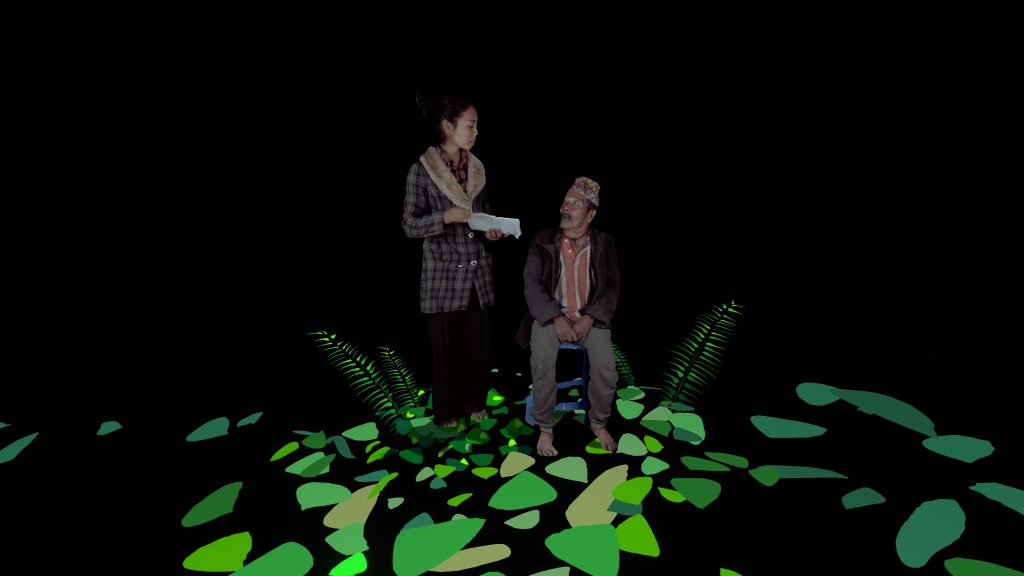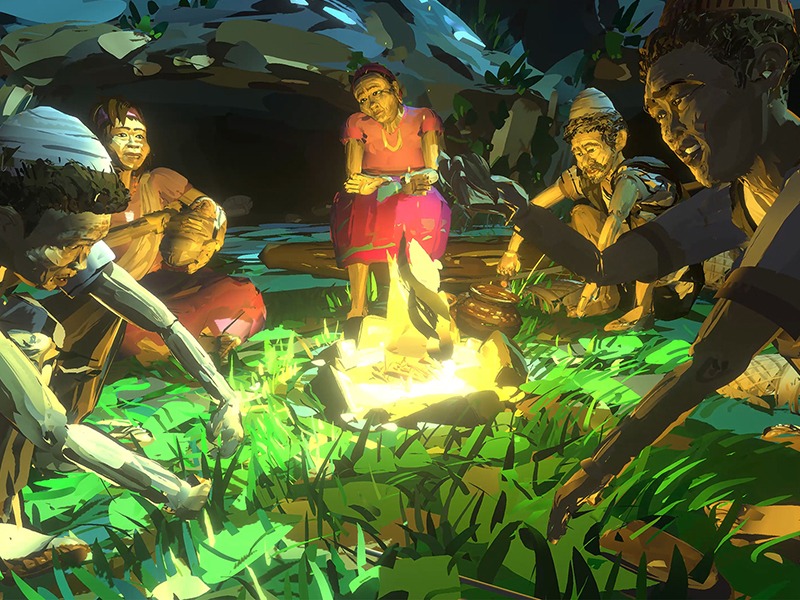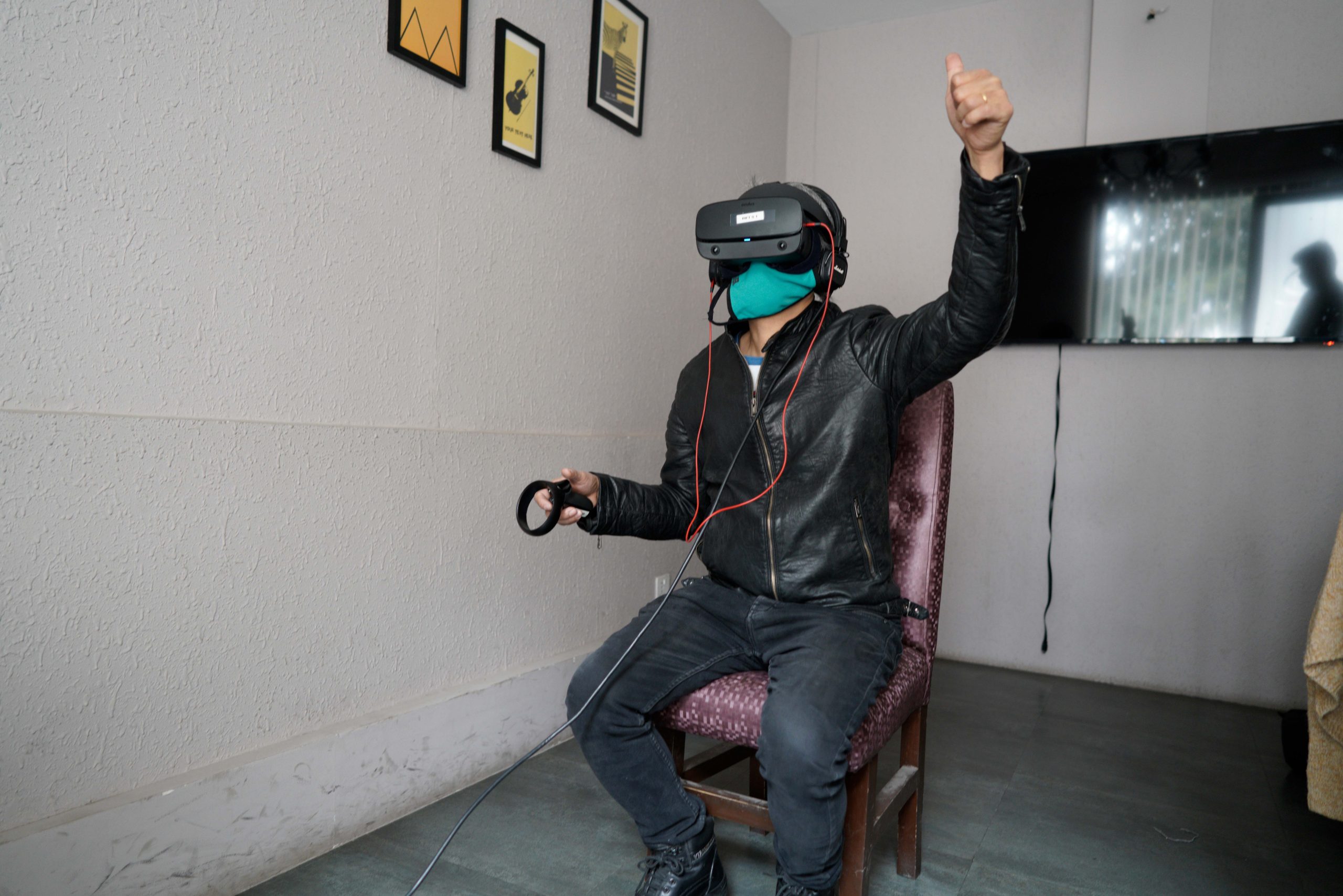The Kusunda Project is a ground-breaking interdisciplinary collaboration between academic researchers and artistic expression, aimed at exploring the integrated use of multimodal storytelling and immersive visualisation for the revitalisation of the endangered heritage and language of the Kusunda Indigenous community in Nepal.
By evaluating two works – an interactive virtual reality experience and a short film about an endangered indigenous language in Nepal called Kusunda – this research offers an insight into the role of these new immersive technologies in creating emotional understanding of the subject at hand in comparison to film.
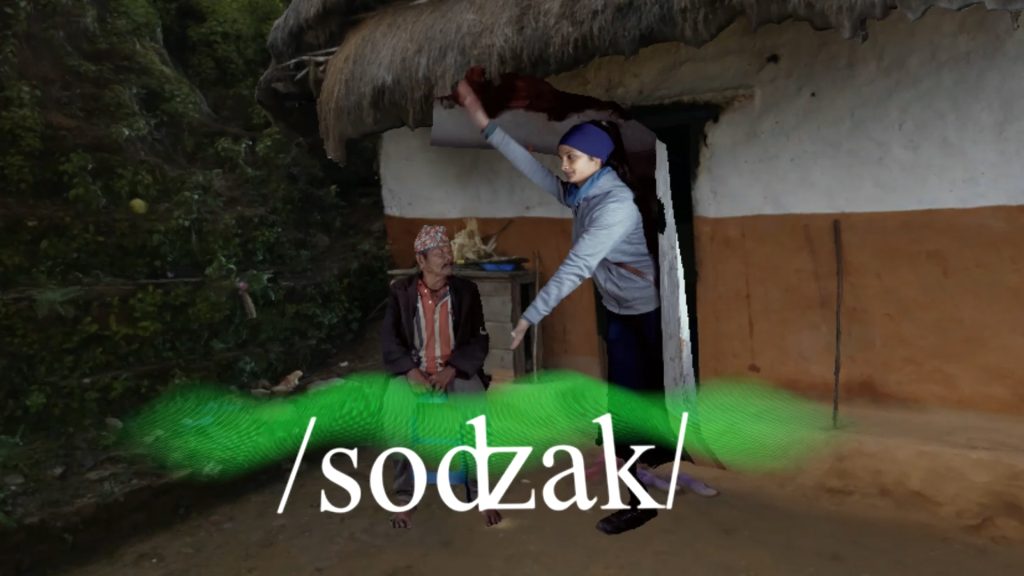
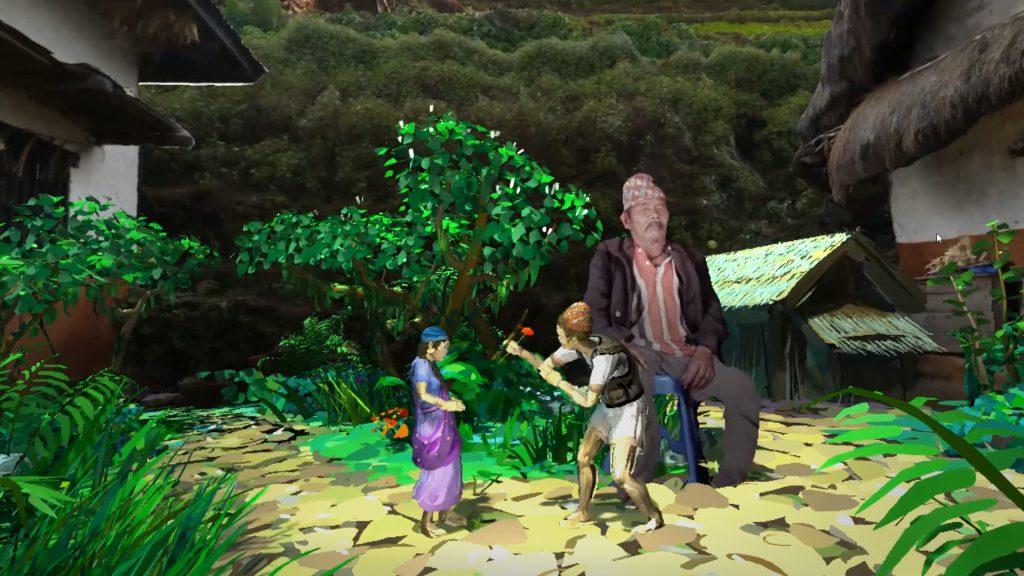
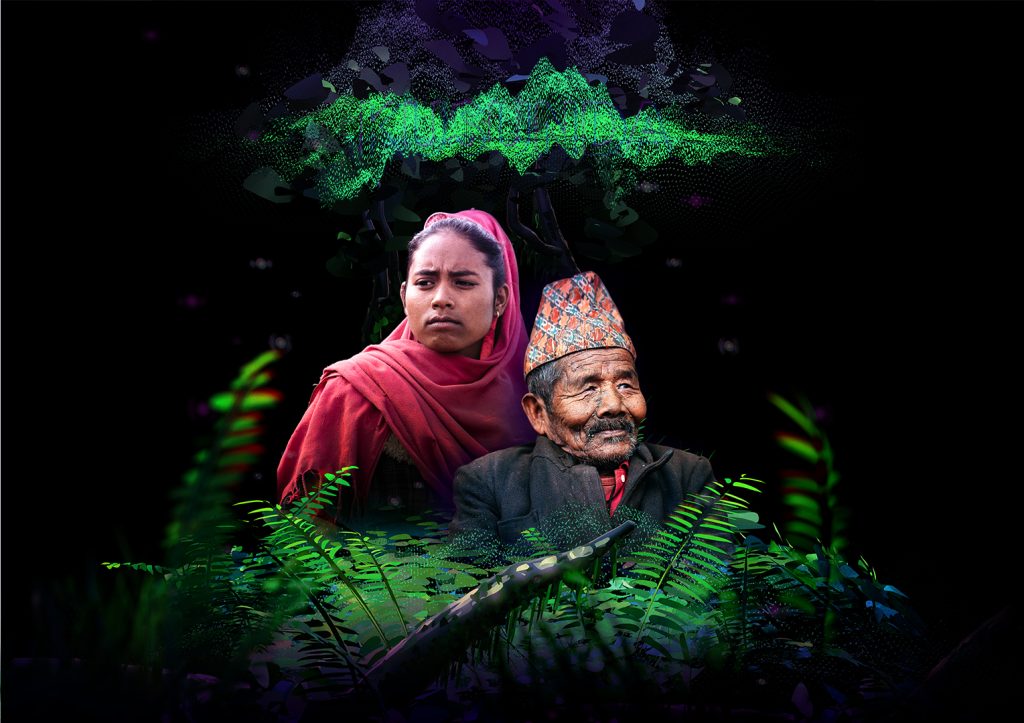
The interactive VR application, created by NowHere Media, invites users to speak the Kusunda language by meeting its last speakers and guardians. The project has enabled members of the Kusunda community (a tribe of former hunter-gatherers in the forests of western Nepal) to highlight the importance of preserving Indigenous languages around the world that are at the brink of disappearance. According to UNESCO, nearly 50% of the world’s languages are endangered.
Audio-visual 2D formats, such as film, have played an important role in the documentation and archiving of intangible cultural heritage, including oral traditions, language and traditional art forms. The advent of technologies such as virtual and augmented reality begs an exploration into how these new formats may compare and contrast with existing audio-visual formats.
Evaluation
The main research objectives of this project are:
- To develop a multi-strand evaluation framework that will allow us to clarify whether interactive 3D VR experiences are more effective tools when compared to 2D more traditional applications (i.e. films, interactive bidimensional applications) in facilitating critical and emotional engagement with endangered indigenous languages and heritage;
- To establish a preliminary archive of stories and knowledge on Kusunda culture that will be used to develop a larger project with suitable partners to create an online digital archive of endangered languages and cultures;
- To create an evaluation model and best practice guidelines that would allow for the development of effective research and interactive 3D VR storytelling for the understanding, analysis, and revitalisation of endangered indigenous heritage, as well as laying the foundation for future work on 3D XR research in the heritage sector.
This project starts from the assumption that greater emotional engagement to endangered languages and heritage through 3D XR would be expected to improve learning, knowledge acquisition, and understanding. This because 3D immersive experiences allow for the activation of multiple learning styles – the visual-auditory-kinaesthetic learning styles model – whereas 2D videos only includes visual and auditory elements. Previous works have also demonstrated how learning, knowledge acquisition, positive emotions, engagement are significantly higher with VR compared to a 2D video and textbook formats.
Pictured: Project evaluation sessions with media makers, language experts and teachers, and community members Lamahi and Kathmandu, Nepal, and ARU students
Team
- Dr Fabrizio Galeazzi, StoryLab (ARU)
- Gayatri Parameswaran, Co-Director and Co-Founder, NowHere Media
- Felix Gaedtke, Co-Director and Co-Founder, NowHere Media
- Sudeep Bhaju, Filmmaker, Kathmandu, Nepal
- Christopher Nightingale, Creative Technologist, Research Assistant, StoryLab (ARU)
- Elizabeth Landesberg, Filmmaker and Educator, Research Assistant, StoryLab (ARU)
